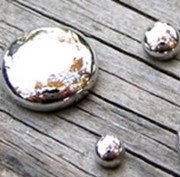 Mountains such as these in California hold rocks able to store CO2
Mountains such as these in California hold rocks able to store CO2A team of geologists has mapped areas of the US containing rocks which pull carbon dioxide from the air, a process they hope can be harnessed to slow global warming.
Called ultramafic rocks, these rocks - such as peridotite, dunite and lherzholite - contain minerals that react with carbon dioxide to form limestone and chalk, effectively removing the CO2 from the air.
According to Sam Krevor, the lead author of the report from Columbia University's Earth Institute and the US Geological Survey, the United States' 6,000 square miles of ultramafic rocks could hold more than 500 years' worth of the country's carbon dioxide output.
"We're trying to show that anyone within a reasonable distance of these rock formations could use this process to sequester as much carbon dioxide as possible," said Krevor.
Generally formed deep underground, the rocks are brought to the surface under geological conditions such as plate collisions, meaning that the majority of the US rock formations are located in coastal mountain ranges in areas such as California in the west, and along the Appalachians in the east.
Mineral carbonation is a version of CSS (Carbon Capture and Storage) technology. However unlike standard methods, where liquid or gaseous CO2 is injected into spaces underground, mineral carbonation results in a harmless solid.
Scientists are working on methods to increase the speed of the reaction, which typically takes thousands of years under natural conditions.
The geologists hope that more studies of ultramafic rocks will be carried out on a global scale. In May, Juerg Matter, from Columbia's Lamont-Doherty Earth Observatory is taking part in a project to inject basalt formations with water saturated with CO2 from a nearby geothermal power plant. A similar project is planned for Wallula, Washington, by Pacific Northwest National Laboratory.
Source: The Earth Institute at Columbia University











No comments:
Post a Comment